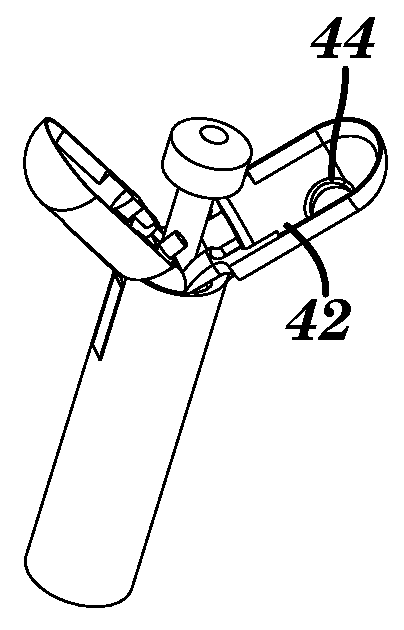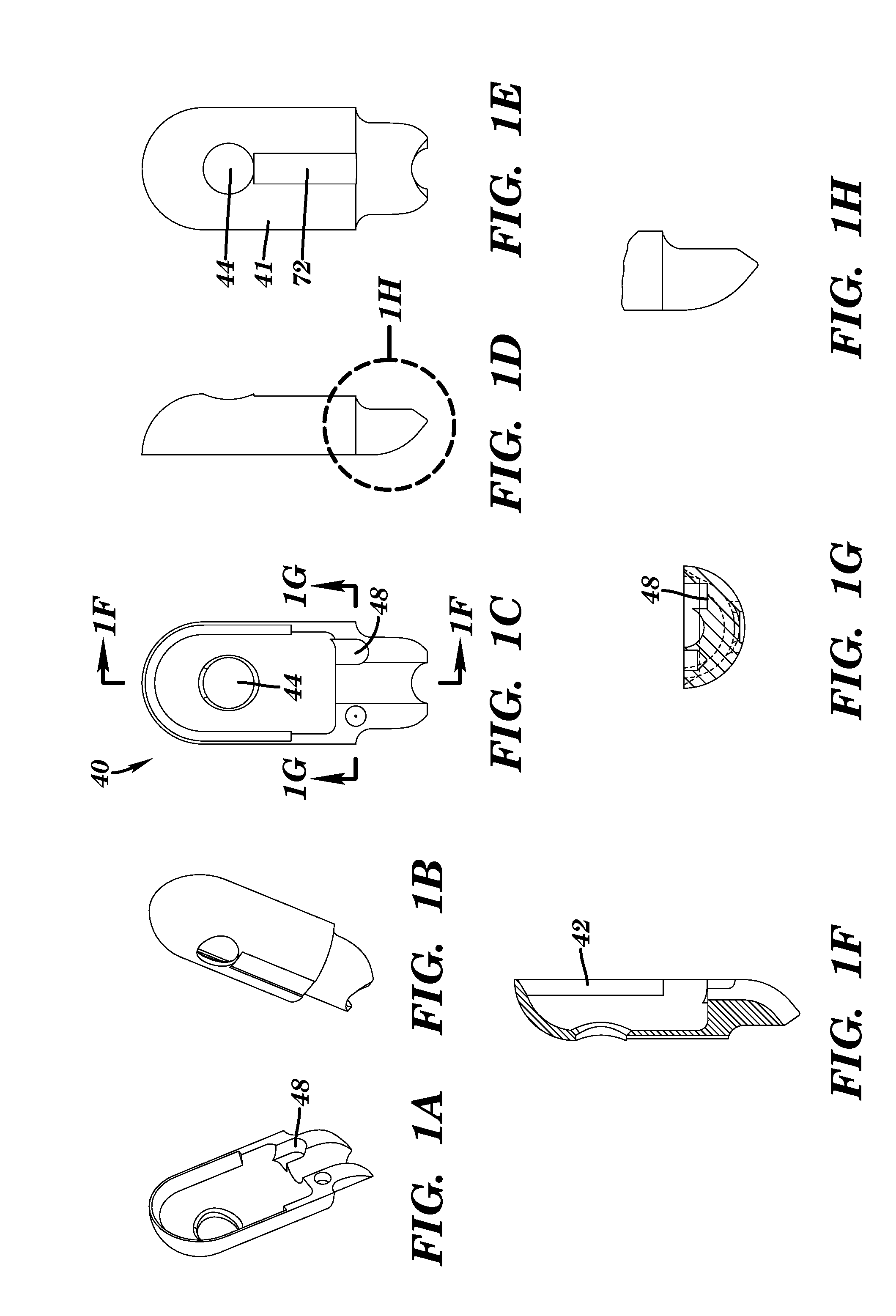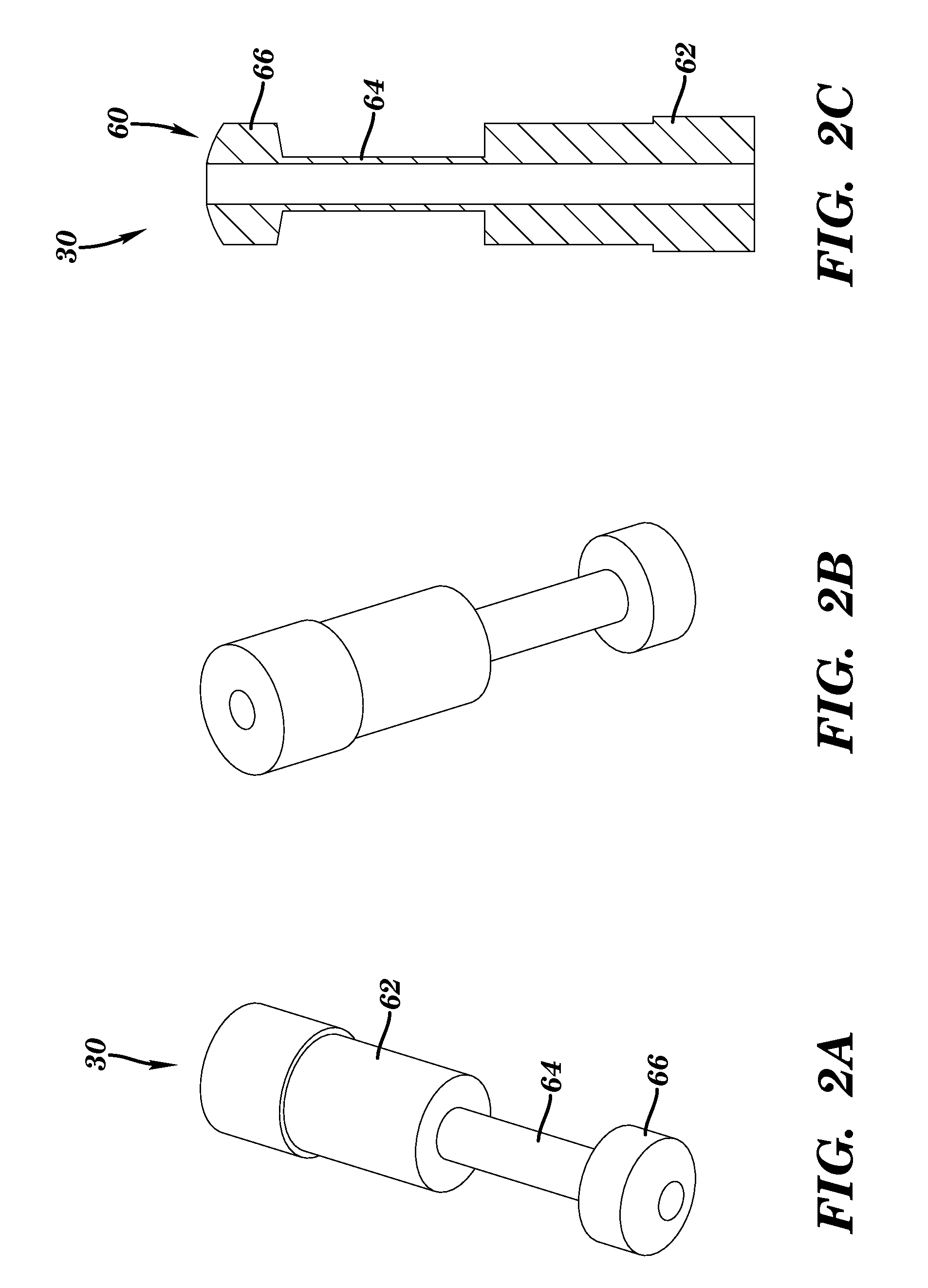Low cost disposable medical forceps to enable a hollow central channel for various functionalities
a technology of medical forceps and hollow central channels, which is applied in the direction of surgical forceps, surgical staples, osteosynthesis devices, etc., can solve the problems of increasing the cost of such instruments, increasing the amount of play, and increasing the distortion of the jaw movement of the devi
- Summary
- Abstract
- Description
- Claims
- Application Information
AI Technical Summary
Benefits of technology
Problems solved by technology
Method used
Image
Examples
example 1
Side Hinge Concept
[0061]The hinges are offset from the center axis on the side of the tube, rather than in the middle as is done on conventional designs. This allows for maximal use of the internal space for additional functionalities. Furthermore, this design has the advantage of increased closing force as compared to the conventional mid-tube hinge design. See FIG. 21.
[0062]The length of the jaws “a” can be variable depending on the desired forces needed, and the length of “b” is limited by the tube size (See FIG. 22) in that the forceps can fit through the working channel of the medical scope. Here, the hinge sees an additional moment due to the twisting caused by asymmetric jaws. The hinge itself could be a pin hinge, a screw hinge with one or two screws, rivet, or any other equivalent attachment technique. The materials used for the hinge and jaws could be metal, plastic, or ceramic.
example 2
Ferrule Design
[0063]The jaws are opened and closed by using the CAM ferrule geometry (see FIGS. 7A-D). The ferrule is a rigid tube that contains the fiber-optics, and / or other components to provide additional functionalities to the forceps (see FIG. 5). The ferrule has physical features on the outside of the tube that mechanically open and close the forceps jaws. These features for example, could be rings or tabs which are a part of the ferrule or which are attached to the ferrule. The shape of the contact geometry (areas where ferrule comes in contact with the jaws) controls the opening and closing. The ferrule can be metal, plastic, and / or ceramic.
example 3
Flex Joint Concept This concept uses a flexible hinge to constrain the jaws (see FIG. 6). At least one flexible strip is needed for each jaw. Alternatively, the flexible hinge may be a sleeve. The flexible hinge extends from the tube to the jaw. The hinge can be attached between the tube and the jaw in a number of ways. For example, the strip can be a slot fit, welded, soldered, glued, melted, a single piece with the jaws or tube attached to the other member, etc. The strip material can be metal, plastic, textile, or made of any other flexible material. The jaws are actuated by the ferrule as described above. With this design, longer jaw arm geometry is possible which creates a higher closing force.
PUM
 Login to View More
Login to View More Abstract
Description
Claims
Application Information
 Login to View More
Login to View More - R&D
- Intellectual Property
- Life Sciences
- Materials
- Tech Scout
- Unparalleled Data Quality
- Higher Quality Content
- 60% Fewer Hallucinations
Browse by: Latest US Patents, China's latest patents, Technical Efficacy Thesaurus, Application Domain, Technology Topic, Popular Technical Reports.
© 2025 PatSnap. All rights reserved.Legal|Privacy policy|Modern Slavery Act Transparency Statement|Sitemap|About US| Contact US: help@patsnap.com



